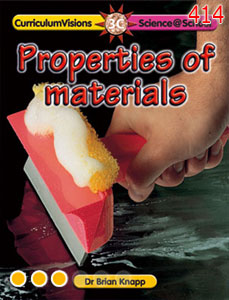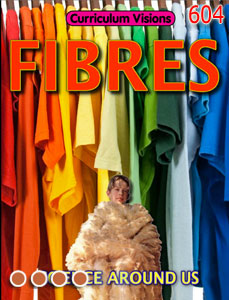There are two kinds of fibres. Natural fibres and artificial fibres. Natural fibres are produced by both plants and animals.
Two plant fibres are cotton and flax. The cotton fibres form on the seeds of the cotton plants. Flax are fibres that grow inside the stem of the flax plant and give it strength to hold up its leaves and flowers. These fibres are used to make linen cloth. There are many other kinds of plant fibres. They may be used for making baskets and paper.
Most paper is made from wood fibres.
The main fibre we use from animals is wool, but the hair of other animals such as goats, camels and even rabbits may be used.
Silk is made by the caterpillar of the silk moth as it spins its cocoon.
Artificial fibres are made in factories. One fibre, called rayon, is made by mashing up wood and heating it to make a material like syrup. This is then pushed through small holes like those in a watering can to make long strands. The strands are cut up to make fibres of rayon.
Other artificial fibres such as nylon and polyester, are made from materials in oil.
Fibres are too short and weak to be made into a cloth so they are twisted and stretched together in a process called spinning. The thread of twisted or spun fibres is called yarn. this is strong enough to be woven or knitted into cloth.








